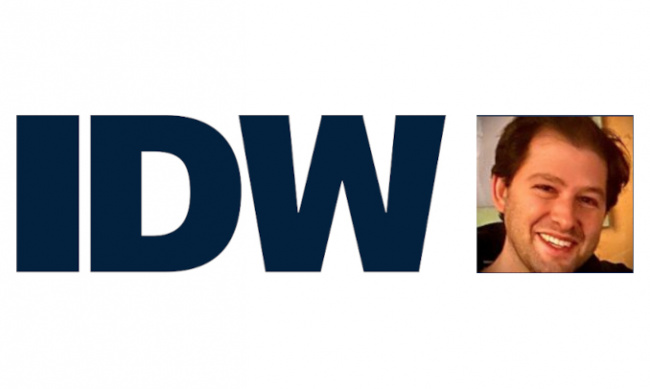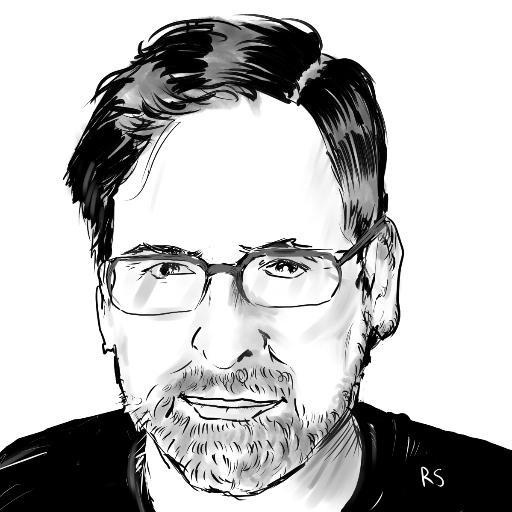In part one of a lengthy interview, incoming CEO of IDW Entertainment Davidi Jonas talked about the company’s publishing plans, including output, its retailer and distributor relations, licensed books, originals, and more (see "IDW CEO Davidi Jonas Interview Part 1").
This second part discusses the crisis facing the publisher that required shareholders to take swift action to reduce costs and restructure the company. The final part, to be published tomorrow, talks about IDW’s evolving media strategy in light of the changes in the Hollywood landscape, with one more organizational note.
Our conversation has been edited for length and clarity.
Rob Salkowitz, ICv2: Your father, Howard Jonas, is chairman of IDW Media Holdings, but how did you come to find yourself CEO of a comic book company? Do you have interest or experience in the business?
Davidi Jonas: It’s not a direct route. I didn't grow up reading comics or being engaged in the community of comics. The first time I took notice is when I met [IDW cofounder and former CEO] Ted Adams and [partner] Mark Knoller around 2013. I really liked Ted, and I'd always heard that he’s a really good businessperson, almost like a cash register, he was just constantly making profit and sending dividends. I was excited to get to spend time with Ted, and we kind of connected. Later I became an advisor to the company. I had some ideas for the team that weren’t really adopted, so I disengaged.
At one point, I had made a remark that I thought the stock was worth about a dollar. It was trading around $30 at the time. Well it eventually hit a dollar and I thought my words had committed me to do something, so I asked my dad about getting back involved.
Was that what finally triggered these latest actions, the reduction in workforce and reorganization (see "IDW Lays Off 39%")?
That was not my expectation when I got back involved in mid-March. I thought this was going to be a cushy job. I mean, the stock was at a dollar, it can’t really get worse, right? But I figured out quickly that the company was headed to insolvency.
We just reported how much cash is on hand as of what was it last Friday, and I think it was about $5.7 million. From the fourth quarter of the previous year to Q1 of this year, the company went from like $10 million to $9.4, so it lost maybe about $6-700,000 [in cash] between Q4 and Q1. The company lost close to $4+ million dollars [in cash] between the first quarter and the second quarter. Now I'm not saying the run rate will would always be that bad quarter over quarter, but if you follow that through for another two and a half or three quarters, the company would have been out of money and they didn't have any equity value to go raise capital. The only way they would have been able to raise money would have been to dilute the shareholders, in such an absurd way that, to sustain the business, it almost would have been the equivalent of a bankruptcy in terms of equity value destruction for shareholders.
And so we stepped in right away when we saw what was going on, as quickly as we could, to try to turn the ship around. Thankfully, I think we have done that both on the cash side of things as well as on the operational effectiveness of the business.
The press release announcing your appointment mentioned that you have some strong ideas for the company. Can you share what some of those thoughts might be?
So as I mentioned, what we saw were two issues. One was the burning through capital and the other was the operational. What I saw was inefficiencies, and, I mean inefficiency is not even the right word. The organization of it was perplexing to me.
Here’s what I mean. Over the last, I don't know, three to four years, year over year, discounting a massive influx of Locke and Key coming in, the company was making between $25 and $30 million of revenue. In terms of the size of certain departments in the company, it didn't make sense to have such a big staff relative to the amount of revenue that they were generating.
For instance, a billion-dollar company might have four or five people in the accounting team and we had more than that. Our sales and marketing was pretty robust, and I couldn't track that there was any relationship between the size of the sales and marketing team and the and the revenue that was being driven. I go back and look at the revenue from 10 years ago from IDW at the time when Ted was running the company and they had a staff of 45 people at the time and they were doing the same amount of revenue, and that's not even accounting for inflation. They were doing more with a smaller staff and they were getting more value. And so I look at those numbers and thought that doesn't make sense.
The editorial team maybe was a little bit big, but nothing crazy. I mean, this is a comic company, and that's really the engine, the storytelling. But there are these inefficiencies in terms of just the size. And when you have so many people around to do a certain function, there's what you’d call a diffusion of responsibility, or at least that becomes a possibility. I've always found that if you have fewer people and you just have to get the job done somehow, you get the job done. And not only that, but people take a greater sense of ownership and autonomy in their work.
You talked about the issues of how the business was organized. Can you elaborate?
When I looked at the way the business was run, it was very siloed, and the silos became bigger and bigger as time went on. We're not General Electric. We're a small independent comic publisher. And in that business, it really makes sense for there to be an integrated organizational structure so that the people working on editorial have direct involvement and relationship with the marketing team, and that the people working on direct marketing sales to comic book shops have a direct relationship with the direct-to-consumer department, and the people working on e-commerce need to work directly with people who are working on digital sales.
Instead, you had all these silos. I looked at that, I thought it was inefficient. But the more I got involved, the more I realized it's not just inefficient: It's insane, because you're taking the people that have the deepest passion and engagement with the product and telling them when you're done with it, just please throw it over the transom to a team of people that can't have the same level of passion and excitement because they're not part of the creative process.
That's crazy. I mean we have some of the most talented people in the industry and they have a brilliant connection to the product and to the creators that we work with and to the franchises that we work with and to the licensors that we work with. They are some of the best representatives of the company.
What are your ideas for solving this problem?
The way I want to run the business is where everybody's integrated and communicating. We set up a structure where we have weekly team meetings three times a week, everyone in the company all together. Full transparency. Everybody knows what everyone else is doing. When entertainment goes on a pitch, people in originals know about it. When originals are going to try to sign up a new author, the people who are working on license know about it. They're going to trade ideas; they're going to riff off each other. They're going to create that dynamic conversation.
I think that's where the magic is going to happen for this company, where we give people authority, autonomy and agency to create not just great material, but great connections with the audience through as many modes of engagement as we can manage.
Click here for the first part and click here for the third part of this three-part interview.
Rob Salkowitz (@robsalk) is the author of Comic-Con and the Business of Pop Culture.

Column by Rob Salkowitz
Posted by Rob Salkowitz on May 11, 2023 @ 3:59 am CT




